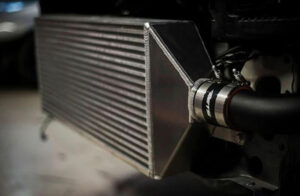Modern vehicles operate on a 4-stroke cycle. These four strokes perform four distinct functions, including Intake, Compression, Power, and Exhaust strokes. Initially, fresh air is added to the combustion cylinder of the vehicle then comes the combustion chamber that burns fuel to generate energy. The combustion process requires oxygen, and it is the responsibility of the intake to deliver an adequate amount of fresh air to burn the engine. The second stroke refers to the compression phase in which air and fuel mix for combustion. Let’s dive deep to understand everything about internal combustion engine cars so that issues related to them can be resolved as they arise.
Application of 4 Stroke Engine

A lawnmower is an ideal example of a four-stroke engine. These are the engines with a 7cc RC engine to a Cat C18 diesel engine with a Horsepower of almost 800. Four-stroke internal combustion engines are also installed in outdoor power equipment.
Advantages of 4 Stroke Engine
- 4 Stroke engine generates high levels of torque at low RPM.
- Fuel is obtained only once, which makes it a fuel-efficient option
- These dissipate less fuel because no oil or lubricant is added to the fuel.
- The engines last longer and experience a high amount of wear and tear
- There is no need to add extra oil to a four-stroke engine
- A internal combustion engine car generates less noise and vibration during its operation.
A certain amount of fuel would remain unburned and causes a lot of pollution. This is why air is a fuel mixture that must mix properly for the combustion process.
Valves
The valves of the car have handled the air or gas entry inside various engine parts. These valves are present at the intake that allows the entry of fresh air. It has components like Turbocharger, pump, or other mechanical devices inside it. It handles both opening and closing activities within various devices.
Camshaft

A mechanical component performs elevations in the shaft for its opening and closing along with intake valves. It is the responsibility of the fuel injector to mix the air so that air and fuel mix properly with each other.
Pistons, Connecting Rods, and Crankshafts
The energy produced by combustion chambers is to be transferred to the wheels for their vehicular motion. Therefore, it needs additional components that can convert the reciprocating motion of pistons within the cylinder into rotational motion. Pistons that move upwards and downwards are changed into rotational motion for the wheels. One complete crankshaft revolutions mean two power strokes. Thus chemical energy is transformed into kinetic energy through 4 stroke cycle.
Differentials
The differentials handle the responsibility of dividing power and torque obtained from the internal combustion engine car. If you own a four-wheel-drive system, then a disproportionate amount of torque is delivered to the four wheels that need it the most.
Turbo and Intercoolers

The vehicle performance can be improved via Turbo and Intercoolers. These serve distinct purposes mostly as a catalyst responsible for drawing more power, reducing emissions, fuel efficiency, or thermal efficiencies. The energy released by exhaust gas can be used to enhance a car’s power and torque. The exhaust gases lead to the turbine, and turbo rotation leads to compressor rotations mounted on the same shaft. This leads to fresh air compression, and the quality of fresh air packed within the cylinder increases. Since fuel is to be injected from the chamber, which means more power. The hot air needs to cool down before getting inside the combustion chamber.
Exhaust Gas Treatment System
The exhaust gas released by the vehicle is taken care of by the Exhaust gas treatment system. Emission system norms are becoming strict clean systems will offer efficiency. The exhaust treatment systems installed in present-day cars minimize the impact of a carbon footprint on the car. To decrease vehicle emissions, exhaust gas systems are becoming more sophisticated than before.
Where to Purchase 4 Stroke-Engine From?
4-stroke engine cost generally falls between $1300-$1500, which is quite expensive and can burn a hole in your pocket. However, you can save money by getting quality and affordable internal combustion engines from Autoparts. Pay the installation charges to the mechanic and save money.
The Bottom Line
The Four Stroke cycle engines comprise different components. Every component plays a role in helping the engine run smoothly.
